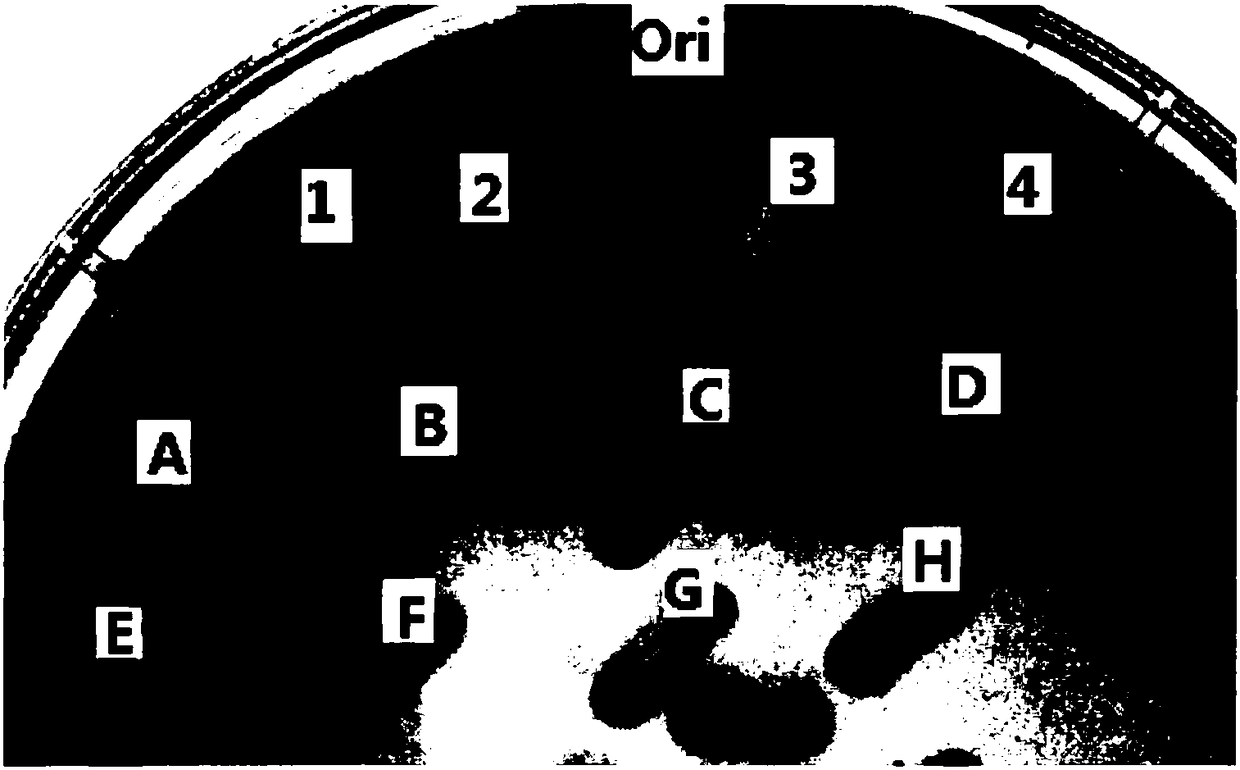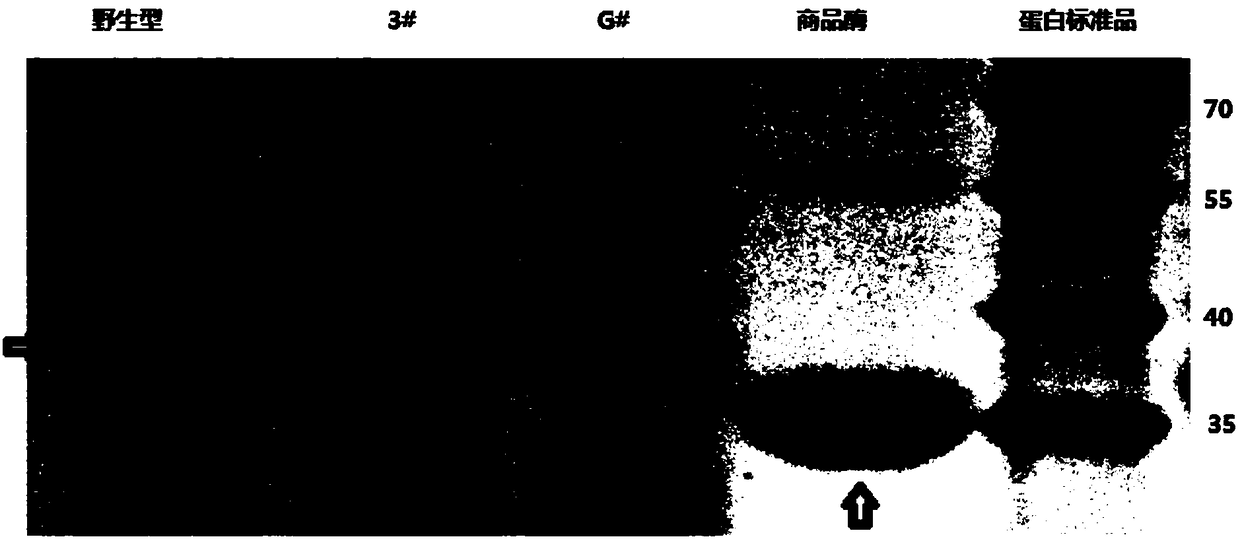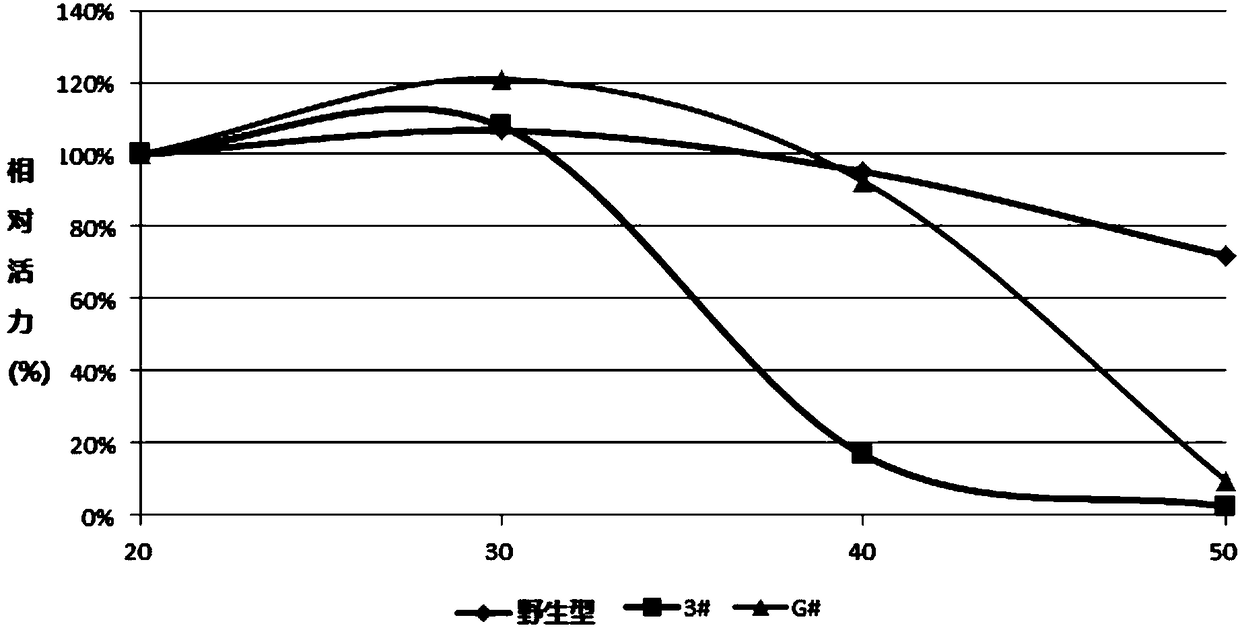Lipase and application thereof
A technology of fatty acid esters and oils, which is applied in application, fat production, fatty acid esterification, etc., can solve the problems of insufficient repeated use times, and achieve improved tolerance, improved enzymatic properties, and specific activity of esterification Improved effect
- Summary
- Abstract
- Description
- Claims
- Application Information
AI Technical Summary
Problems solved by technology
Method used
Image
Examples
preparation example Construction
[0141] Preparation of biodiesel
[0142] The present invention also provides a method of using the polypeptide of the present invention for oil refining, biodiesel preparation, improved feed, food preparation, and pharmaceutical preparation. The method includes the step of using the polypeptide of the present invention to synthesize biodiesel.
[0143] Biodiesel refers to fatty acid monoalkyl esters obtained by esterification and transesterification of fats and oils containing carboxylic acid compounds with organic alcohols (such as methanol, ethanol, glycerol), the most typical being fatty acid methyl esters. In the present invention, the oil containing carboxylic acid group compounds can be animal and vegetable oils known in the art to produce biodiesel, such as edible oils whose acid value exceeds the national standard; including but not limited to crude oil, partially refined oil, catering Waste oils, crude oleic acid, acidified oils, mixtures of PFAD and fatty acid esters...
Embodiment 1
[0205] Embodiment 1: Construction of CalB mutant library
[0206] The amino acid sequence of CALB is derived from the amino acid sequence of wild-type Candida antarctica lipase, and the wild-type amino acid sequence is derived from NCBI, GenBank Accession: ACI06118.1. The mature protein sequence shown in SEQ NO: 2 was selected for expression, the DNA sequence was designed according to the codon preference of Pichia pastoris as shown in SEQ ID NO: 1, and the leader peptide sequence of α-factor was added (from the commercial vector The DNA sequence on pPIC9K) was sent to Shanghai Sangon Bioengineering Co., Ltd. for whole gene synthesis.
[0207] PCR was performed on CalBU / CalBepD using the nucleic acid provided by Gene Synthesis Company as a template, using Ex-Taq DNA polymerase from Takara Company and primers. The primer sequences are as follows:
[0208] CalBU (SEQ NO: 7): aaagaattcccgaaacgatgagatttcc,
[0209] CalBepD (SEQ NO: 8): aaagaattcttatggagtaacaataccagaac.
[0210...
Embodiment 2
[0212] Embodiment 2: the acquisition of CalB mutant
[0213] According to the method described in the literature (Shixuan Wu and Geoffrey J.Letchworth. High efficiency transformation by electroporation of Pichia pastoris preserved with lithium acetate and dithiothreitol. Drug Discovery and Genomic Technologies, 2004, 36 (1): 152-154) to prepare Pichia pastoris GS115 sensory State cells, and then use Bio-Rad's electrotransformer to transfer the CalB mutant vector library into Pichia GS115 according to the preset Pichia transformation program parameters. Transformation-coated MD plates (1.34% YNB, 4×10 -5 % biotin, 2% glucose, 2% agar), placed in a 30°C incubator for 48 hours. The grown colony was transferred to the esterification plate, sealed with a parafilm, and placed in a 30°C incubator until obvious activity was observed. Similarly, the vector pAOCalB of the wild-type gene was transformed into Pichia pastoris, screened for auxotrophy, and the esterification plate was spr...
PUM
 Login to View More
Login to View More Abstract
Description
Claims
Application Information
 Login to View More
Login to View More - R&D
- Intellectual Property
- Life Sciences
- Materials
- Tech Scout
- Unparalleled Data Quality
- Higher Quality Content
- 60% Fewer Hallucinations
Browse by: Latest US Patents, China's latest patents, Technical Efficacy Thesaurus, Application Domain, Technology Topic, Popular Technical Reports.
© 2025 PatSnap. All rights reserved.Legal|Privacy policy|Modern Slavery Act Transparency Statement|Sitemap|About US| Contact US: help@patsnap.com



